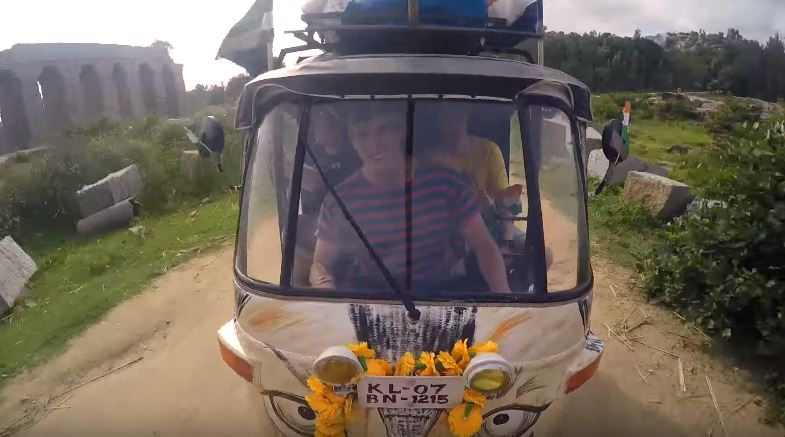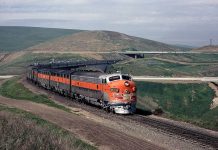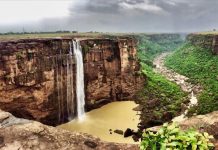4250km trip across India from Shillong (Megalaya) to Kochi (Kerala) in an auto-rickshaw
It’s been less than a month, and it already feels like the adventure was ages ago. On the other hand, many of the memories are still vivid; whether it’s our first night drive (and the many that followed), the days of uncertainty before we left, the many close encounters with other vehicles (and the occasional contact), the great food we ate sat at the side of the road, the group of Hindi men dancing in the back of a truck as it overtook us, the stunning views we got when our tiny rickshaw managed to haul all 250kg of us up winding and pothole-ridden mountain roads, or the temple where Sacha was terrorised by a lively monkey, eventually having to surrender a bag of nuts.
What I remember most vividly though are the smiles and laughs from the locals, sometimes out of excitement, other times at our alien customs. Maybe it’s the memory of the tollbooth attendants running out of their booths to help us in the pouring rain, laughing and smiling rather than cursing us for getting our rickshaw wedged in the motorcycle path. Or maybe it was two children smiling and waving at us as they were doing their business on the side of the road, producing what looked suspiciously much like the watery and yellow Dahl we had eaten that morning.
What stuck with me, especially outside of the touristy areas, is that the people were very genuine, interested, and incredibly proud of their country and state. Not concerned about the daily task and worries that we like to obsess over in the west, these people happily take an hour out of their day to watch us fix a broken clutch cable. Even in the poorer areas people seemed satisfied, dare I say happy, so long as they were able to provide for themselves and their family for another day. For myself, and probably a couple of you reading this, it’s a great to keep reminding yourself that there are so many people who are able to be far more thankful for every aspect of life, and yet have so much less than we do. For one thing, I know that after having slept in a room, I am far less concerned about finding the “perfect” flat in Holland before I start working.
There are many things we learned in India, including how you can best bargain for a more sensible hotel price (the procedure may include walking out, even when the last thing you want to be doing is driving to find another hotel). The Indian head-wobble was a complex matter; generally a single nod was an acknowledgement that you had been heard, but it could also mean yes or no interchangeably making it rather difficult to decipher. If you are ever faced by head-wobble-ambiguity, I recommend you take the answer as a yes, and see what happens (your mileage may vary). What I never learned in India is how to use the hose to clean your derrière without soaking your trousers, pants, shoes, and back of your t-shirt (if you have particularly bad hand-eye coordination).

It was definitely an arduous journey, yet most days were, at least in part, enjoyable. It must have been quite an achievement though, as almost all Indians who we spoke to were impressed with our challenge (both due to the distance and the vehicle) and warned us of the dangers that we might still face. Somehow this 1.2 Billion-people-large country feels quite compact and accessible having covered it in our rickshaw, but having mapped out the 4250km route we took (excluding any unintentional detours), the mammoth journey seems all the more amazing. You can find the more exact routes on Strava, as we recorded each day’s route there (Bjorn Borgers on Strava).
No trip would be complete without a video, and that’s what I’ve been busy with in the past weeks. It’s very difficult to put 3 weeks of India into an 8-minute video, but it certainly gives you an idea of our trip! Be sure to watch it in HD.
Last but not least, it’s an amazing thank you to all of those who followed our journey and donated to our two great causes. We are truly proud that you have helped us surpassed our 1000 target, and raising a great including gift-aid. With the half that is apportioned to Coolearth, they will be able to save nearly 11 acres of rainforest, storing around 3000 tonnes of CO2, while simultaneously supporting the indigenous people. The money raised for the Great Ormond Street Hospital will go towards research, new equipment, redevelopment and support of families with children suffering from unusual or difficult diseases. For example, in 2001 the Great Ormond Street Hospital pioneered gene therapy for a 9 month old Rhys who could not produce white blood cells to fight any type of infection; today Rhys lives healthily without the condition. Your money has gone straight to both these charities, helping to prevent deforestation or maybe fund the next important breakthrough in medicine. Amazing!


















